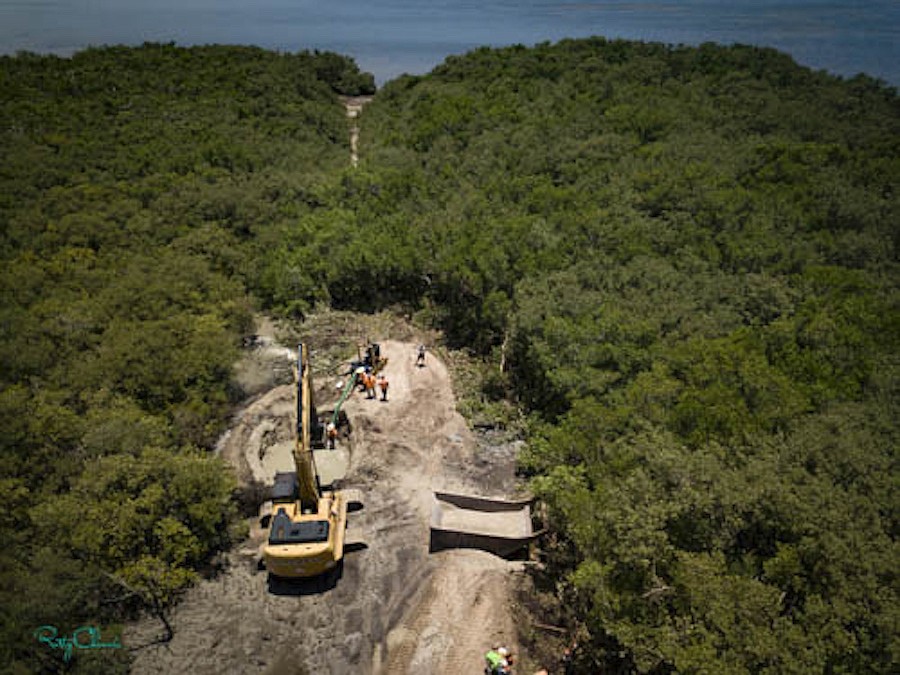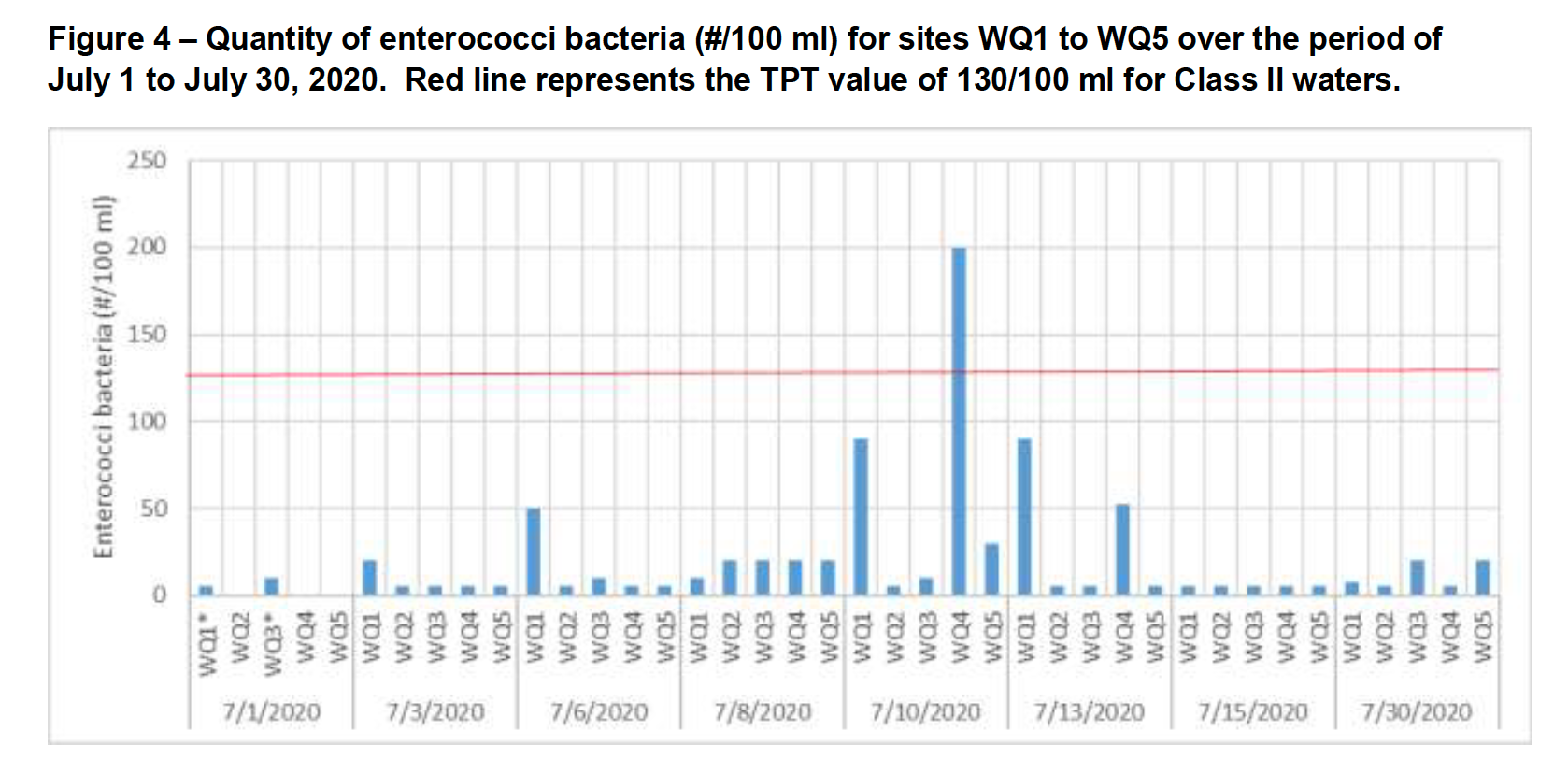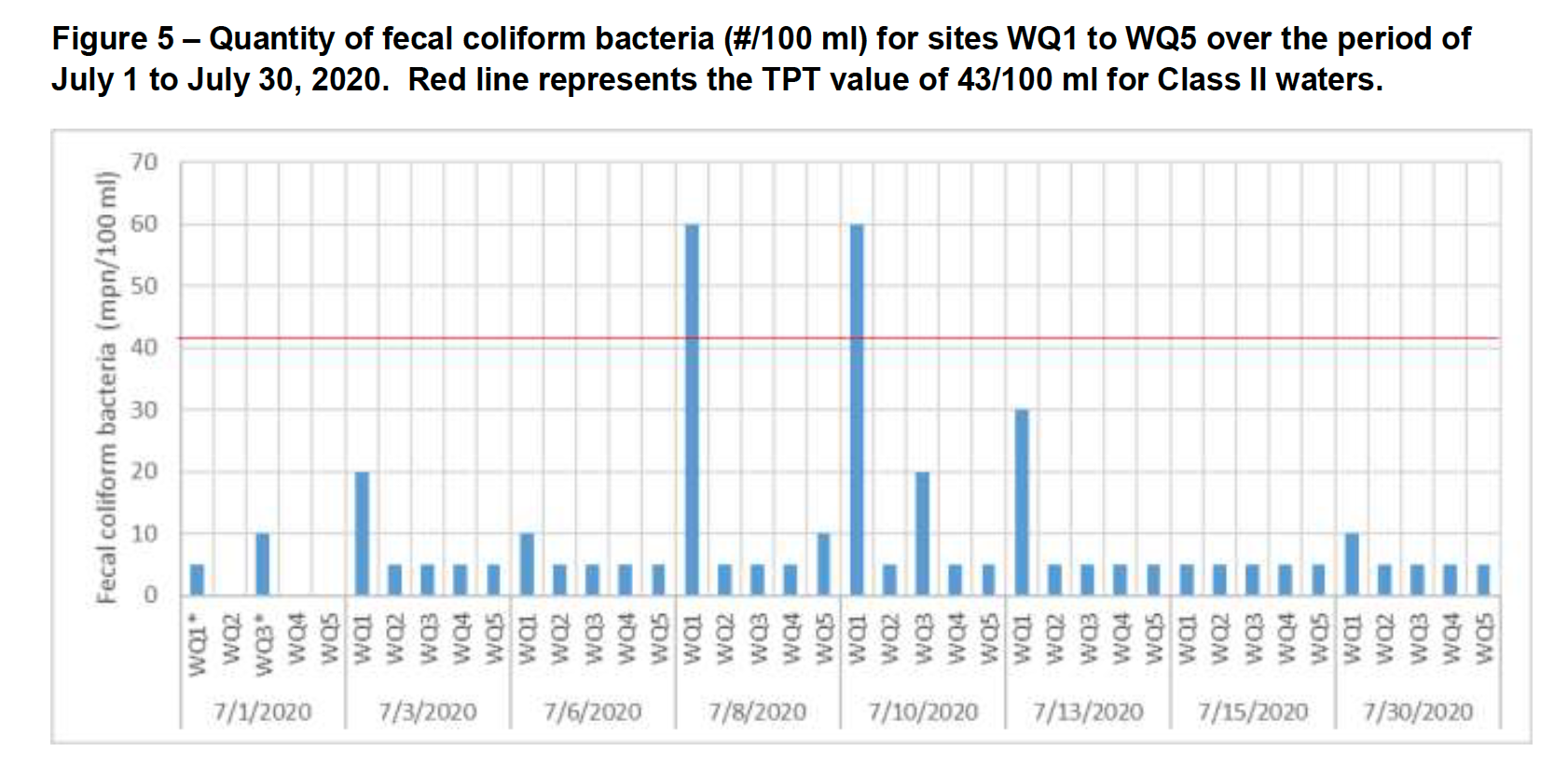- April 23, 2024
-
-
Loading

Loading

Longboat Key's contractor has finished its water-sample testing in the Sarasota Bay waters after June’s sewage break, determining that the effect was low.
The testing was in accordance with protocols established by the town’s third-party contractor Environmental Science Associates and was performed in coordination with the Florida Department of Environmental Protection.
The FDEP is still deciding whether to levy a penalty or fine against the town. The state's decision is expected in the next few weeks.
“The results of this sampling effort indicate that between July 1 and July 30, 2020, the nearshore waters of Sarasota Bay closest to the location of the sewage leak were not noticeably impacted by that leak, in terms of bacteria or turbidly,” ESA principal associate Dr. David Tomasko wrote in a 15-page email to Longboat Key Public Works Director Isaac Brownman and his staff.
ESA took water samples at several locations throughout Sarasota Bay on July 1, July 3, July 6, July 8, July 10, July 13, July 15 and July 30.
The state of Florida uses two types of fecal indicator bacteria to determine compliance of waters with Class II standards: enterococci bacteria and fecal coliform bacteria. For enterococci bacteria, the 10th percentile threshold criterion (TBT) is a value of 130/100 mL for Class II waters. For fecal coliform bacteria, the TPT criterion is 43/100 mL for Class II waters.

“The intent of Class II criteria is to promote the ‘propagation or harvesting’ of shellfish,” Tomasko wrote. “Such a classification does not mean that it is safe to consume shellfish at any given time, but that the waters are held to a higher standard than those that are primarily meant to protect public health during activities such as swimming.”

Levels of fecal coliform bacteria in the waters closest to the leak at WQ1 did not exceed the threshold values on July 1, July 3 or July 6, but did exceed the thresholds on July 8 and July 10. Those levels at the WQ1 testing site did go back beneath the 43/100 mL threshold on July 13, July 15 and July 30.
“Additionally, sophisticated genetic analyses did not find evidence of humans as a source of bacteria at the water quality station located closest to the leak,” Tomasko wrote.
Tomasko said the location of the wastewater leak — about 400 feet inland from the shoreline of Sarasota Bay — may have played a factor.
“Perhaps due to the location of the leak occurring in the mangrove fringe, rather than the open waters of the bay, there was no evidence of even a short term impact of the sewage leak on bacteria levels in Sarasota Bay,” Tomasko wrote. “This likely would not have been the case if the leak had occurred in those sections of the pipe underlying the open waters of the bay.”
Suncoast Waterkeeper board member Rusty Chinnis said he flew his drone over the spill to see what was going on for himself.
“The fact that it was so far back in the mangroves, I'm sure was one of the reasons it didn't impact the Bay worse than it did,” Chinnis said.
Longboat Key Town Manager Tom Harmer said the town was fortunate the leak happened in the mangrove area.
“It doesn't downplay the seriousness of the leak, but it does mitigate some of the potential impacts,” Harmer said.
Earlier this month, the FDEP said it estimates the leak was about 17 million gallons, down from the town’s initial estimate of 25.8 million gallons.
The state’s investigation into the sewage break is ongoing.
Water-sampling crews did not find evidence of human feces as the source of bacteria at site WQ1, but did find low quantities at WQ6 just offshore of Bayshore Gardens.
“It would seem that much of the bacteria found offshore of Bayshore Gardens was likely not due to human sewage, but other ‘natural’ sources,’” Tomasko wrote.
The pipe was built in 1973, inspected in 2015-16 and given years of estimated life remaining.
“I know they did the testing on that pipe,” Chinnis said. “And so, that begs the question, if they did this test and the pipe had that much life, then how come it didn’t live up to those expectations?”
Harmer said the key is to read the previous third-party reports on the pipes carefully.
“In their conclusion, they said that there should be 20 to 25 years of reliable service left in the pipe, ” Harmer said. “And so, they did say in that same report that, that doesn't mean there may not be a leak at some point, but it should be repairable and not catastrophic.”
Specifically, Harmer mentioned the use of SmartBall technology in 2016-17 when a traveling ball was sent through the pipeline to inspect its interior.
“We are questioning, why this area was not picked up in their review because they listed a couple of areas that had anomalies in their SmartBall,” Harmer said. “As it went through the pipe they picked up a couple of anomalies. This area was not one of those anomalies, so we are questioning why it didn't pick this up, but we'll know more than once we understand what may have caused the hole.”
The town has contracted Berkeley Research Group to determine two things: Provide an estimate of the total discharge amount, separate from the FDEP's estimation; Determine the cause of the break
Harmer said he's asked BRG to make both “a priority.”
Longboat Key is planning to move forward with its plans for a redundant pipe project.
“Every citizen on Longboat Key needs to make sure that the Longboat [Key Town] Commission [and] powers that be move this replacement pipe along as fast as possible because if what had happened there had actually happened in the Bay, it would have been kind of unthinkably catastrophic,” Chinnis said.
Harmer mentioned the importance of expediting the design and permitting process for the redundant pipe project.
“We don't have any evidence that indicates there's a bigger problem with the pipe, but the fact that it is our only source of a wastewater transmission from the island, that’s why we were advancing the project anyways, Harmer said. “We really think having a backup or redundant system is going to be best for the town so that in case we do have another leak at some point, it can be addressed in a timely manner and minimize any impacts.”
The pipe gathers sewage from the entire town, pushes sewage east from a pumping station on Gulf Bay Road underneath Sarasota Bay and terminates at a treatment facility north of Conquistador Parkway in Bradenton.